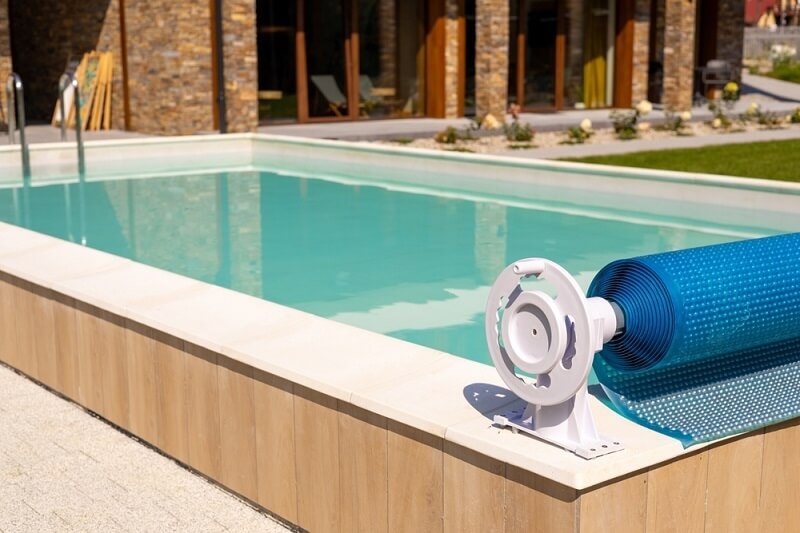The 8 Types of Home Insurance You Must Know About
The 8 Types of Home Insurance You Must Know About


The cost of owning a house is continuing. The fact is the average house price has increased by more than double the inflation rate over the past decade. If you're currently buying a home or plan to in the future, you may wonder what you can do to protect your most significant investment. The answer is home insurance. A standard mortgage agreement doesn't cover many essential home features, such as your basement, attic, windows, or kitchen cabinets.
It is overwhelming to sort through the maze of home insurance options and select the home insurance policy that provides the best value for your money. That's why we've put together this guide covering the top 8 types of home insurance and why you need them.
The Home Insurance Types:
Not all insurance policies are the same. The cheapest homeowner's insurance policy won't provide the most protection and vice versa.
Standardized in the United States, homeowners insurance comes in several flavors, from HO-1 to HO-8, and covers a wide range of scenarios depending on the policyholder's needs and the nature of the property being insured.
Basically, three categories of protection
Actual cash value or ACV
After depreciation is factored in, actual cash value accounts for the total cost of the home and your personal property (i.e., how much the items are currently worth, not how much you paid for them).
Replacement cost
A replacement value coverage will pay the full cost of repairs or replacement if your home or belongings are completely destroyed, regardless of how much it has depreciated over time.
Replacement cost Vs. Actual cash value
A home insurance policy allows you to choose between replacement cost and actual cash value coverage.
- If you have replacement cost coverage, your damaged items and home are replaced with new or similar versions.
- You will receive the depreciated value if you use actual cash value. For example, if you have an eight-year-old couch, your insurance company will reimburse you for the cost of an eight-year-old couch rather than a new one.
- Replacement cost coverage is more expensive, but it pays out more when you file a claim.
Guaranteed Replacement value
The most all-inclusive option, with an inflation buffer to cover repairs or rebuilding, should the cost exceed the policy's maximum. You can choose a long replacement period with certain providers, which means you get more protection than you paid for up to a specific limit (usually 20% to 25%).
A rising or falling market means you should insure your home for more than its current market value. A homeowner's guaranteed replacement value policy will cover the difference if building materials or labor costs go up.
Before we dig into details, it's better to understand the following terms:
Named Peril And Open Peril Policies
- Named Peril: A "peril" refers to any hazard that could endanger your family's safety or the value of their possessions. In this context, all perils are specified; what's not on the list is not covered.
- Open Peril includes an exhaustive list of exclusions of all risks not covered by the plan. Anything not listed as an excluded is covered.
You'll find an overview of the eight distinct categories of homeowner's insurance below:
HO-1 home insurance
HO-1 provides basic homeowners insurance. An HO-1 policy pays only if one of 10 dangers can devastate your home.
- Lightning/fire
- Wind/hail explosion
- Unrest
- Auto damage (such as a car that crashes into your house)
- Smoke
- Vandalism/Mischief
- Theft
- Volcanism
HO-1 plans cover only ten dangers instead of 16 in other policies. It simply covers the dwelling structure at ACV. You won't get enough to rebuild, but rather the house's value minus depreciation. Personal property, liabilities, and extra living expenses aren't covered. HO-1 costs cheaper since it offers less coverage. Most states don't provide it, and mortgage lenders require higher levels of protection.
HO-2 Home Insurance
HO-2 covers more risks than HO-1. HO-2 covers HO-1 dangers plus:
- Snow/ice weight
- Water or steam overflow
- Plumbing, AC freezing
- Accidental bulging or cracking
- Falls
- Accidental electrical damage
- House and property insurance
- Personal effects insurance
- Accountability
- Loss-of-use or extra living expenses
- Others' medical expenses
Under an HO-2, your belongings are only protected for real monetary value after depreciation.
HO-3 home insurance
HO-3 is the most general home insurance policy and covers most homeowners. It covers liabilities, medical costs to others, and additional living expenditures.
Unlike HO-1 and HO-2, HO-3 covers all risks unless expressly excluded. An HO-3 coverage will pay to restore or replace your home, up to your policy limits, unless the damage was caused by specific exclusions:
- Blackout
- Smoke or pollution
- Earthquake
- Flooding
- Vandalism
- Nuclear/war
- Pets, bugs
- Wear, settling
- Negligence
- Government association actions: lack of permissions, defective construction, design, or maintenance
- Damage to empty or under-construction homes
- The weather-related deterioration exacerbates other reasons.
- Lightning/fire
- Windstorm/hail
- Explosion
- Unrest
- Auto damage
- Smoke
- Vandalism/Mischief
- Theft
- Eruption
- Object falling
- Snow, ice, sleet weight
- Overflowing water from household appliances, heating, plumbing, air conditioning, or sprinkler systems extinguishes fires.
- Freezing domestic appliances, heating, plumbing, air conditioning, or fire sprinkler systems.
- Accidental cracking, burning or tearing of heating, plumbing, AC, or fire sprinkler systems.
- Electrical short-circuit damage
HO-4 home insurance
HO-4 renters insurance is for apartment and home tenants. The same 16 dangers as the HO-3 policy cover belongings. Living expenditures and responsibilities are covered. HO-4 insurance doesn't cover rental unit damage. A landlord needs structure insurance to cover their structure.
HO-5 home insurance policy
An HO-5 policy offers the most house and valuables insurance. It covers your home and belongings except for policy exclusions. HO-5 exclusions are identical to HO-3.
HO-5 pays replacement costs, not monetary value. An HO-5 covers liabilities, medical costs, and additional living expenditures. These extensive policies ensure new development. Not all insurers offer HO-5 plans.
HO-6 home insurance policy
HO-6 is for condo/co-op residents. Condo insurance covers:
- After-purchase condo renovations
- Floors, walls, ceilings
- Possessions
- Extra costs
- Liability
- Others' medical expenses
Review your condo association's insurance before getting an HO-6 policy. You want to prevent coverage gaps and duplicate association insurance offers.
HO-7 home insurance
The HO-7 policy covers mobile homes like an HO-3 policy. Mobile home insurance is an open peril coverage for the structure. Like the HO-3, it covers any damage unless it's excluded. The insurance policy only covers HO-3 for items. HO-7 ensures these structures:
- Manufactured single- and double-wide homes
- Mobile homes, single and double-wide
- Trailers
- Modular homes
HO-7 policies only cover stationary mobile homes. It doesn't cover transit.
HO-8 Home Insurance
HO-8 policies are for older properties, usually over 40 years old. Rebuilding these homes costs more than their market value. HO-8 policies are common for historic properties and sites.
An HO-8 policy covers your home and valuables just for 10 perils:
- Lightning/fire
- Wind/hail explosion
- Unrest
- Aircraft \sVehicles
- Smoke
- Vandalism/Mischief
- Theft
- Eruption
HO-8 covers liabilities, medical costs, and additional living expenditures.
What Does Home Insurance Not Pay For?
However, some types of damage are typically not covered by homeowner's insurance, including those caused by natural disasters, also known as the "acts of God" or acts of war.
Okay, but what if you reside in a region prone to hurricanes and floods? Or perhaps you live in a particularly seismic region. Both earthquake and flood insurance require additional coverage, or "riders." If your personal information is stolen, you can get your money back with identity recovery insurance. If your drains or sewers back up, you can get extra coverage if you need it.
Conclusion
All homes must be protected. Home insurance should not be considered a luxury but a necessity. You need insurance that works for you, and different types of dwellings require different protection. To make an educated decision, read this article from Insuranceandleisure.com, which offers detailed information on the various home insurance policy coverage options. Continue reading our blog to learn more about recent insurance developments.
This content was created by AI



